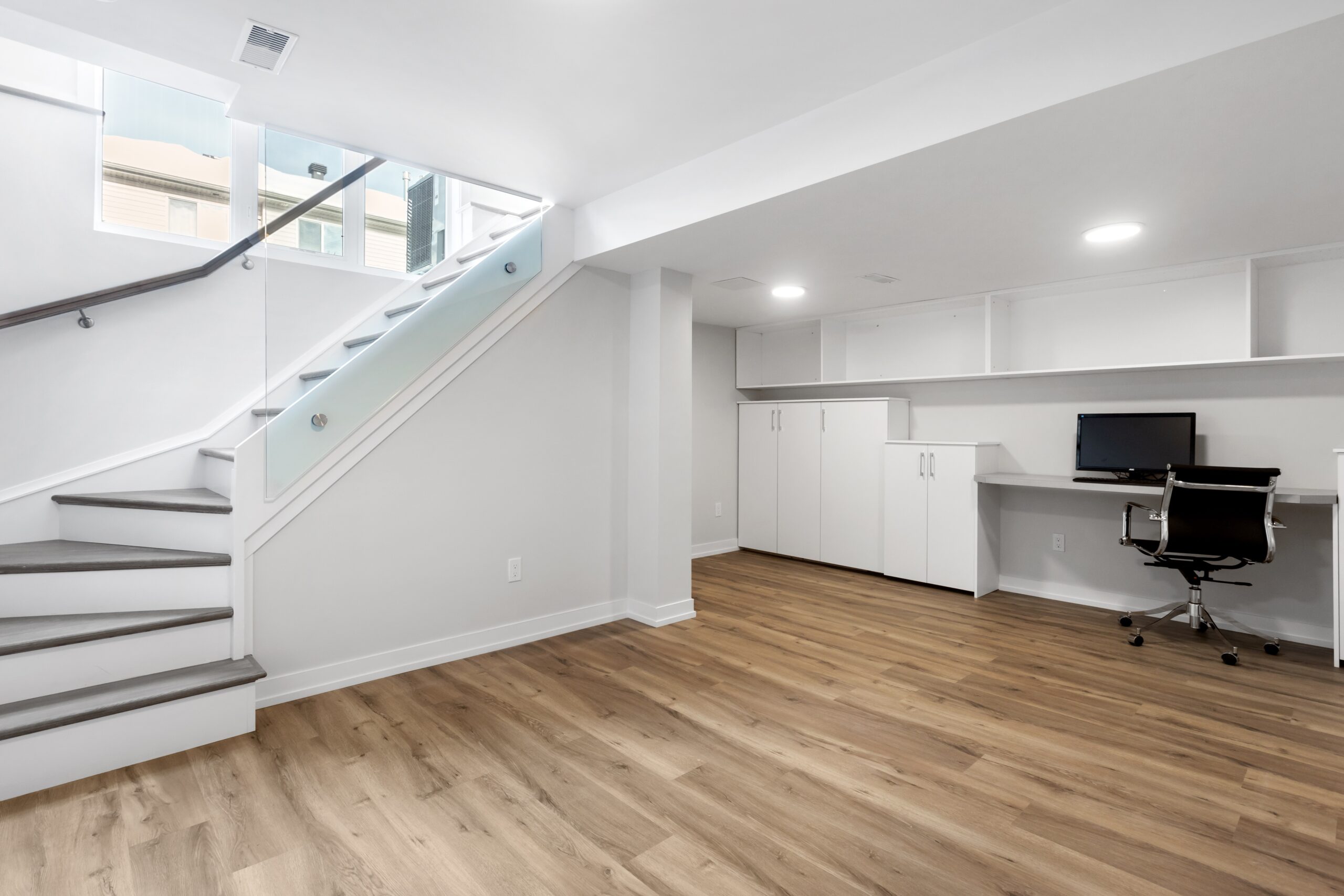Permitting 101
Part 2: Building Permits
In Part 1, Intro to Permits, we covered how to figure out which jurisdiction you’re in, what trade permits are, and how to get them.
We also covered all the projects that DON’T require the granddaddy of all permits, the Building Permit. In this post, Part 2 of the Permitting 101 series, we’re going to talk about the biggest hurdle to your remodel dreams and how to make sure you get through the process without a hitch.
When You Need a Building Permit
According to the City of Portland Bureau of Development Services, which will be similar for most of the surrounding jurisdictions:
- Build a one or two family dwelling
- Build, demolish or add a room, garage, shed, or other enclosed structure attached to a house
- Build, demolish or move any structure that is more than 200 square feet in area or having a wall height of more than 10 feet high measured from the finished floor level to the top of the top plate
- Add or enlarge a porch cover, patio cover, carport or other open-sided roofed structure with a cumulative area greater than 200 square feet that is attached to a house
- Enclose a patio cover, porch or carport
- Finish an attic, garage or basement to create habitable space
- Add a bathroom in new or existing space
- Cut new window or door opening, widen or reduce the size of existing openings
- Move, remove or add walls
- Build or replace an exterior stairway more than 30 inches above grade
- Build a retaining wall that exceeds four feet high measured from the bottom of the footing to the top of the wall or any retaining wall affected by the weight of an adjacent slope, or nearby driveway or structure
- Build a deck more than 30 inches high
- Put up a fence more than seven feet high
- Move more than 10 cubic yards of earth
- Pour concrete sidewalks, slabs and driveways more than 30 inches above adjacent grade or over any story or basement
- Install a barrier around a swimming pool
- Replace roofing in a wildfire hazard zone
- Reroof a house or duplex when more than 15% of the existing roof sheathing is being removed and replaced
As you can see, just about anything more than a cosmetic refinishing or trade install or repair requires a building permit. The difficulty getting them will vary depending on your project; for instance, a simple re-roof permit may be a quick over-the-counter process with a simple sketch and worksheet, while even small additions will require full existing and proposed conditions plans, building sections, framing plans, and possibly structural calculations and an engineer’s stamp.
As with the trade permits, normally your contractor will print the plans and apply for the building permits for you. If you haven’t chosen a contractor or intend to GC the work yourself, you’ll have to fill out a form stating as much, and can pull the permits yourself.
If you’re working with a design professional, they’ll most likely know exactly what your permit set needs to include and will take care of the necessary plans and details for you as part of their service. If you’re handling that part of the project yourself, you’ll just need to do a little research to make sure you’ve included all the information the department needs to see to review and approve your permit.
Most Commonly Required Permit Info
For large projects like additions and major interior remodels:
- As-Built (Existing Conditions) plans and elevations
- Proposed plans - what you're trying to accomplish
- Site plan with property boundaries, existing and new building footprint, setbacks, contours and property corner elevations (if there's more than 4' of elevation difference from one side to the other)
- Building sections showing how the existing and new are connected and how the new structure is built
- Construction details like guardrails, how the stairs are built, attic and crawl space venting calculations, and new crawl space access framing
- Structural (framing and foundation) plans and details, manufactured truss information, sill plate details, header types, shear wall info, and calculations proving it all works

Each jurisdiction has its own application checklists detailing exactly what information is required for the building permits. For many project types, their website will provide a list of the plans, details, and worksheets that must be submitted for review. If that information isn’t readily available, a call or visit to the building department will be helpful to make sure you submit a complete packet. Whether you talk to them on the phone or in person, take everything they say with a grain of salt; if you ask them on the phone, they’ll likely tell you to follow the checklist to the letter. If you ask them in person, they’ll probably tell you to only include information relevant to the exact work you’re doing. Either way, the answer may be completely different by the time you actually get the plans drawn up and submitted for review, and even if you get permits approved, the inspector reviewing the work in the field may decide he wants additional details and info.
The best thing to do is just go in with your head up and your eyes open, keep the flow of communication open with all parties AND with the city, have a spirit of adventure and trust that things are going to work out.
Potential Roadblocks
- If there was work done on your home (either by you or by a previous owner) that wasn’t permitted and the City doesn’t know about it, be aware that they can come in and require you to permit the work after-the-fact, pay the permit fees, and bring the work up to code or tear it out. It's always a good idea to check the info the City or County has on your home and verify that they have the correct number of bedrooms, bathrooms, and square feet listed; if it doesn't match, there may have been unpermitted work completed on the house.
- If your home is located in an unusual or uncommon zoning district or overlay, there may be some really tough building requirements that could end up halting your project for good. For instance, LTIC is an overlay that applies to residences in very specific parts of the City of Portland that don't have sidewalks. If you plan to do work exceeding 30% of the value of your home, you may have to pay into the fund for every linear foot of street frontage for future sidewalk and road development - or develop them yourself, which is almost certainly not in your remodel budget. Scenic, wildlife, and water overlays can eliminate your ability to expand your home's footprint or modify the exterior. The best way to prevent wasted time and money is to verify what you're hoping to do with your jurisdiction as early in the process as possible, so they can inform you of any issues you may run into.
- There are other potential (and possibly expensive) hiccups that may come up as well, which are hard to foresee before you're in the thick of permitting. If the street stormwater system isn’t fully developed, you may have to install drywells on your property to deal with water runoff. Or if your water meter size isn’t big enough for the number of fixtures you’re adding, you may have to pay to increase the meter or line size.
What to Expect...
In short, there are no guarantees. You can have the best team with the most experience, and you may still run into problems that no one could have anticipated. You can significantly increase your chances of sailing smoothly through permitting if you choose your team carefully, start talks with your building department early, and be diligent about your budget – include plenty of contingency funds in reserve for things that might come up unexpectedly.
The single best chance you’ll have at getting your plans approved is to make sure you pick a good team. If your builder knows what he’s doing and how to get work through inspections, he can help advise your design team on best practices, how the details, sections, and plans should look, and what type of framing and construction types he’d like to use (there are a lot of ways to build a house!). If your design and engineering team is experienced in your jurisdiction and type of project, they’ve usually seen most of the stumbling blocks and can address them before they become issues, or know how to address the issues if they do come up during permitting. Aside from technical skill and knowledge, the best quality in your team is a good attitude and a true desire to help you. The have to be able to enter the permitting phase with the determination to work with your building department, be willing to make the needed changes, and be happy to stick with you through to the end.
...Really!
But really, relax! The fact is, the “worst case scenarios” are pretty rare, and permitting is easy more often than it isn’t. There’s usually a round of City or County questions, what we call a “checksheet,” asking for more information or plan revisions to alleviate code concerns. Most of the time these are simple for your designer and engineer to address, and after the response is submitted the plans are usually approved and you’re ready to go.
Tell me, have you gone through permitting recently? Was it a breeze or a nightmare? What did you learn, and is there anything you can share to help others planning a big remodel? Share the knowledge and the love to help them on their path!




